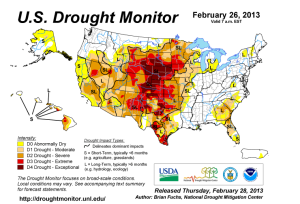The dreaded Alberta winter clipper has made its way into the twin cities, and will be working its way into parts of Wisconsin, and off to the suburbs of Milwaukee and Chicago. This storm, will eventually merge into a larger system, that is expected to drop more than 8 inches in the twin cities metro area. The convergence of these two storms will be the tricky mark of two late winter clipper systems. The main thing to remember with winter clipper systems, is that they are usually quick. Unfortunately, when you have two systems, this makes for a lengthy snow event.
36 hours of Winter Clipper in the Midwest
Why are these two winter clipper systems creating such an issue? Most Alberta Clippers come into the Midwest and the plains of the United States with small weather issues, maybe a dusting to a couple of inches of light and dry snow, and move along within a few hours. That’s it! This late winter clipper system has more umph or power in its punch, as it is two systems, and the precipitation is expected to be higher than most due to the moisture, and the convergence of the two systems.
With the two winter clipper systems, the Minneapolis St. Paul Metro area will see over 10 inches combined in the 36 hour system. The best way to get around in this type of winter system, is to plan ahead, and take your time. With the roads already snow packed and slippery from Monday Morning’s Commute, it will be important to allow at least double the amount of time that you usually need for your travel.
Begin to consider whether you can postpone or reschedule your plans during the next 24 hours. This snow system will create havoc on an already congested interstate system, from Wisconsin to Minnesota, and will delay flights at the airport if the two runways used during snow events become crowded and snow packed.
Winter Clipper Cadence within Early Spring
Beginning to review the nature of winter clipper systems, the usual path is that they come in and depart within 4 hours of time. The extended nature of an early spring winter clipper system is highly unusual. Often, the front is pushed out quickly, due to the jet stream path, and its fast transference. However, the early spring weather often becomes wetter, with the gulf stream moisture reaching into the middle of the United States. This combination often creates some good hefty moisture rich storms.
March 4 and 5th 2013 will see winter clipper systems will be unlike this usual path, with some dry snow in the beginning, and then turning into some wetter and heavier snow. The higher concentrations of snow will be arriving Monday evening into Tuesday morning. With this path, the roads will be slippery and crowded tuesday morning, and if there are plans to travel out to the rural areas of Minnesota and Wisconsin, be sure to make good winter survival plans.
Carry a blanket, extra warm clothing, a charged cell phone, and some water and food. A shovel, and some cardboard can be a good idea too, in case you end up off the road. A neighbor of ours carries chain link with him everywhere, and these are the same links that people used to drive on their tires. Instead of installing them, he simply places them in front of the tires when stuck, and then drives over the areas that are difficult. This is a great survival step, as you often only need a few feet of chain.
Winter Clipper Systems will bring drought levels down
Thanks to the US Drought Monitor service…
http://droughtmonitor.unl.edu/
The drought of 2011 and 2012 still is a problem in the center of the country, and as you can see, with the US Drought Monitor, we are going to need more precipitation to get us back to regular levels in most of the country. The majority of the country is still suffering from intense drought, but that does not mean, that flooding could occur in areas that receive more precipitation. The difficult thing about this coming spring, is there are going to be intense areas of drought, and intense flooding as well.
Without the additional precipitation of gentle but persistent spring rains, we could see drought and flooding all at the same time. This make a difficult winter drive to work, all and good, when you consider that your basement could be damaged with the drought, or even a flood in your area. Winter clipper systems need to be appreciated, as they can offer us the moisture our ground needs, in this very important stage of our two year drought.

